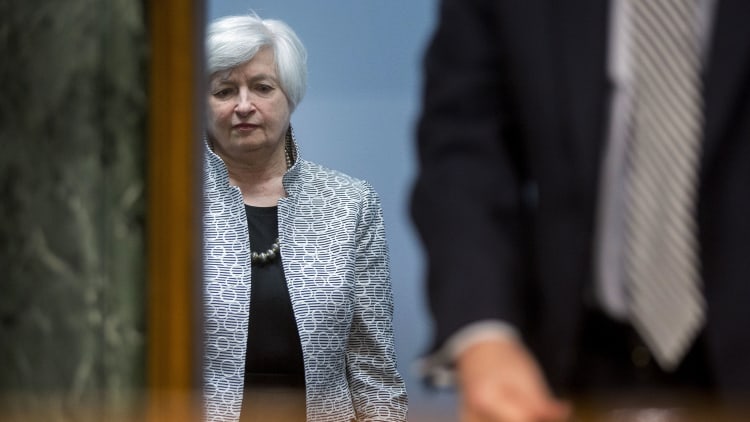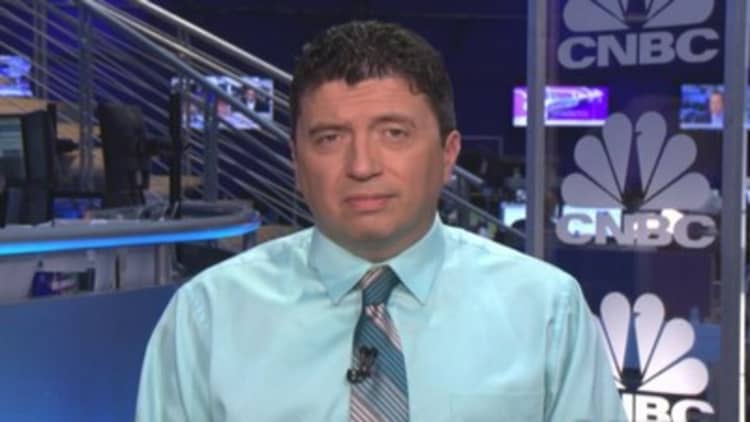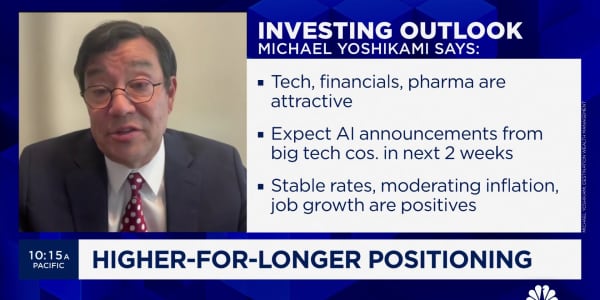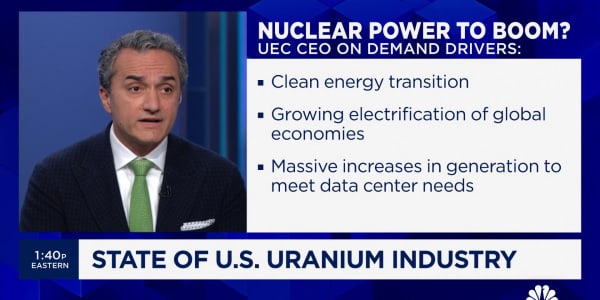
For Federal Reserve critics, lobbing the "behind the curve" charge has become the easiest to way to blast the central bank's ultra-easy monetary policy.
Inside the Fed, though, the charge has become something just short of a badge of honor, an indication that officials there are willing to tolerate being slow to move on interest rates as long as it boosts workers' economic conditions.
The "curve" charge itself has a sharp implication, namely that Chair Janet Yellen and her cohorts are ignoring mounting inflation pressures and ultimately will have their hand forced by an economy growing more rapidly than they give it credit. Moreover, the implication goes straight to the Fed's competence and whether it really is a capable steward or an overzealous money printer too willing to prop up bubbles.
Nonsense, said Pimco's Paul McCulley, who serves as the bond giant's chief economist and, suddenly, as a vocal defender of the central bank's policies.
In a report issued for clients earlier in the week, McCulley said "behind the curve" is exactly where the Fed wants to be—for now. The goal is to keep interest rates low not until unemployment falls below 6 percent or inflation eclipses 2 percent—the previously stated goals from the Open Market Committee for when it would begin to consider raising rates—but until consumer buying power gets considerably stronger.
Read MoreWhat do investors fear most? The Fed's bubble
"Bluntly put: Chair Yellen wants labor to get a fairer share of the fruits of the economy's productivity: nominal wage gains greater than inflation—real wage gains," McCulley wrote.
The Pimco executive dismissed bond vigilantes and inflation hawks as "nattering nabobs" while categorically saying that keeping short-term rates near zero "has worked...because it was the right macroeconomic thing to do."
Going forward, he expects the Fed to treat 2 percent inflation, and in particular wage-generated inflation, as a positive, which it will tolerate for even longer than its detractors expect. McCulley uses something called "Rich's Ratio," formulated by his colleague Rich Clarida, that asserts it's only in the later stages of economic expansions that labor sees real income gains compared to prices.
"The Fed has no interest whatsoever in listening to calls from Wall Street to view accelerating wages as a problem that needs to be solved," he said. "Rather, it is a delight to be celebrated. The Fed would love to see a long bull market in Rich's Ratio. The war on inflation was won long ago, and the time has come for a peace dividend paid to labor."
He concludes: "There is ample room for the Fed to let Rich's Ratio climb for a long time, before fostering a breach of its inflationary mandate so egregious as to warrant immoderately high long-term interest rates."
Read MoreFed unswayed by growth, keeps easing in place
There are a few potential snags, though, with McCulley's outlook, and the doubts about whether Fed policy meshes with economic reality are likely to continue.
Payroll growth already is outpacing, by a narrow margin, gains in CPI and PCE. Average hourly earnings have increased at an annual pace of 2 percent, against 1.5 percent core PCE (excluding food and energy) though real PCE rose 2.5 percent in the second quarter, according to the latest gross domestic product report.
More than that, McCulley assumes there's a point at which income will outpace price gains at a pace that will please the Fed. That would be counter to, say, the 1970s, when income posted strong gains but inflation was even stronger, amid loose monetary policy that ultimately led a recession that former Fed Chair Paul Volcker force-fed the economy to control spiraling inflation.
It's also interesting that Pimco recently released a report advising clients to buy Treasury Inflation Protected Securities, or TIPS.

David Rosenberg, the senior economist and strategist at Gluskin Sheff, believes the Fed already has fallen behind and "may have to play catch-up."
The wage and salary component of GDP grew 4.3 percent in the second quarter and 6.1 percent in the first quarter, growth that Rosenberg said has been unmatched since 2006.
"Methinks the Fed is living in the past here in terms of its ongoing lament over the plight of the labor market," he said.
Read MoreJob creation misses expectations, rate up to 6.2%
Labor supply is tightening even as labor demand is expanding, Rosenberg added. He, too, recommended investors start putting money in inflation-protected strategies as Fed policies lag what's happening in the economy.
"That the Fed has waited this long attests to how nervous it is to take the punch bowl away this cycle—it has never waited this long before to start to snug policy," he said. "I mean, we just celebrated the fifth anniversary of this economic expansion, as tepid as it may have been, and we have Fed policy more accommodative today than it was at the depths of the Great Recession. There will be a price to be paid for this behavior."
—By CNBC's Jeff Cox






